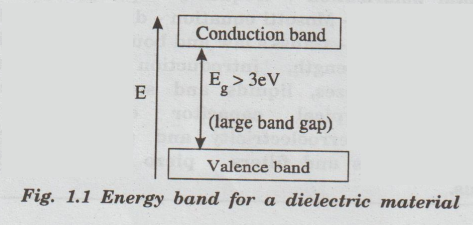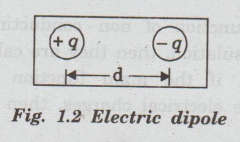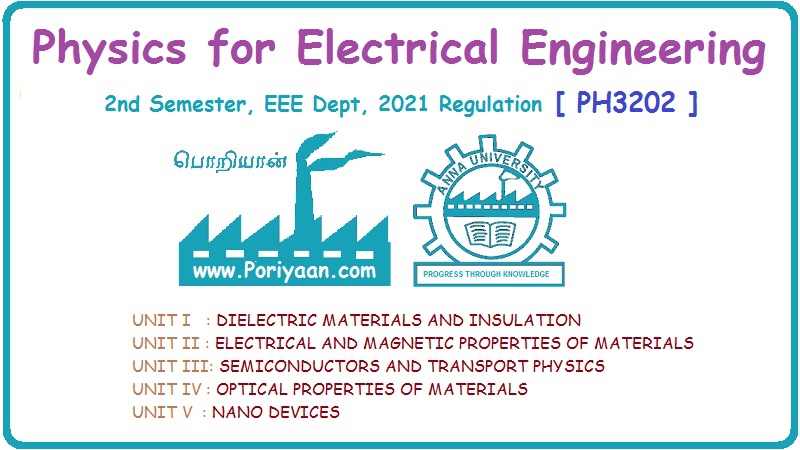Physics for Electrical Engineering: Unit I: Dielectric Materials and Insulation
Dielectric Materials and Insulation
Introduction
Dielectric materials are electrically non-conducting materials such as glass, ebonite, mica, rubber, wood, and paper.
Unit – I
Chapter - 1
Dielectric Materials and Insulation
Matter polarization and relative permittivity: definition - dipole moment and polarization vector P - polarization mechanisms: electronic, ionic, orientational, interfacial and total polarization - frequency dependence - local field and Clausius - Mosotti equation - dielectric constant and dielectric loss - Gauss's law and boundary conditions - dielectric strength, introduction to insulation breakdown in gases, liquids and solids - capacitor materials - typical capacitor constructions - piezoelectricity, ferroelectricity and pyroelectricity - quartz oscillators and filters - piezo and pyroelectric crystals.
Introduction
Dielectric materials are electrically non-conducting materials such as glass, ebonite, mica, rubber, wood, and paper. All the dielectric materials are insulating materials. The difference between a dielectric and an insulator lies in its applications.
If the main function of non- conducting materials is to provide electrical insulation, then they are called as insulators. On the otherhand, if the main function of non-conducting materials is to store electrical charges, then they are called as dielectrics.
Therefore, the study of dielectrics is similar to the study of insulators.
General properties of Dielectric materials
• Generally, the dielectrics are non- metallic materials of inemom ologic high resistivity.
• All the electrons in the dielectrics are tightly bound to their parent nucleus.
• As there are no free electrons to carry the current, the electrical conductivity of dielectrics is very low.
• They have negative temperature coefficient of resistance and high insulation resistance.
• They have a very large energy gap (more than 3 eV) (fig. 1.1).

Basic Definitions
Electric dipole
A system consisting of two equal and opposite charges (+q, - q) separated by a distance (d) is called an electric dipole (fig. 1.2).

Physics for Electrical Engineering: Unit I: Dielectric Materials and Insulation : Tag: : Introduction - Dielectric Materials and Insulation
Related Topics
Related Subjects
Physics for Electrical Engineering
PH3202 2nd Semester 2021 Regulation | 2nd Semester EEE Dept 2021 Regulation
